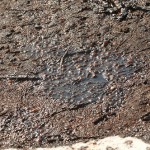Secretary of Energy Steven Chu, Secretary of the Interior Ken Salazar, and Chair of the National Incident Command’s Flow Rate Technical Group (FRTG) Dr. Marcia McNutt (Director of the U.S. Geological Survey) today announced an improved estimate of how much oil is flowing from the leaking BP well. The government and independent scientists estimate that the most likely flow rate of oil today is between 35,000 and 60,000 barrels per day, more than double initial estimates.

The improved estimate is based on more and better data that is now available and that helps increase the scientific confidence in the accuracy of the estimate.
BP is implementing multiple strategies to significantly expand the leak containment capabilities at the sea floor even beyond the upper level of today’s improved estimate. The Lower Marine Riser Package (LMRP) cap that is currently in place can capture up to 18,000 barrels of oil per day. At the direction of the federal government, BP is deploying today a second containment option, called the Q4000, which could expand total leak containment capacity to 20,000-28,000 barrels per day. Overall, the leak containment strategy that BP was required to develop projects containment capacity expanding to 40,000-53,000 barrels per day by the end of June and 60,000-80,000 barrels per day by mid-July.
“This estimate brings together several scientific methodologies and the latest information from the sea floor, and represents a significant step forward in our effort to put a number on the oil that is escaping from BP’s well,” said Energy Secretary Steven Chu. “As we continue to collect additional data and refine these estimates, it is important to realize that the numbers can change. In particular, the upper number is less certain – which is exactly why we have been planning for the worst case scenario at every stage and why we are continuing to focus on responding to the upper end of the estimate, plus additional contingencies.”
Today’s improved flow rate estimate brings together the work of several scientific teams and is based on a combination of analyses of high resolution videos taken by ROVs, acoustic technologies, and measurements of oil collected by the oil production ship together with pressure measurements inside the top hat. Over the weekend, at the insistence of Secretary Chu and the science team, pressure meters were added to the top hat to assist with these estimates.
For information about the response effort, visit www.deepwaterhorizonresponse.com.


